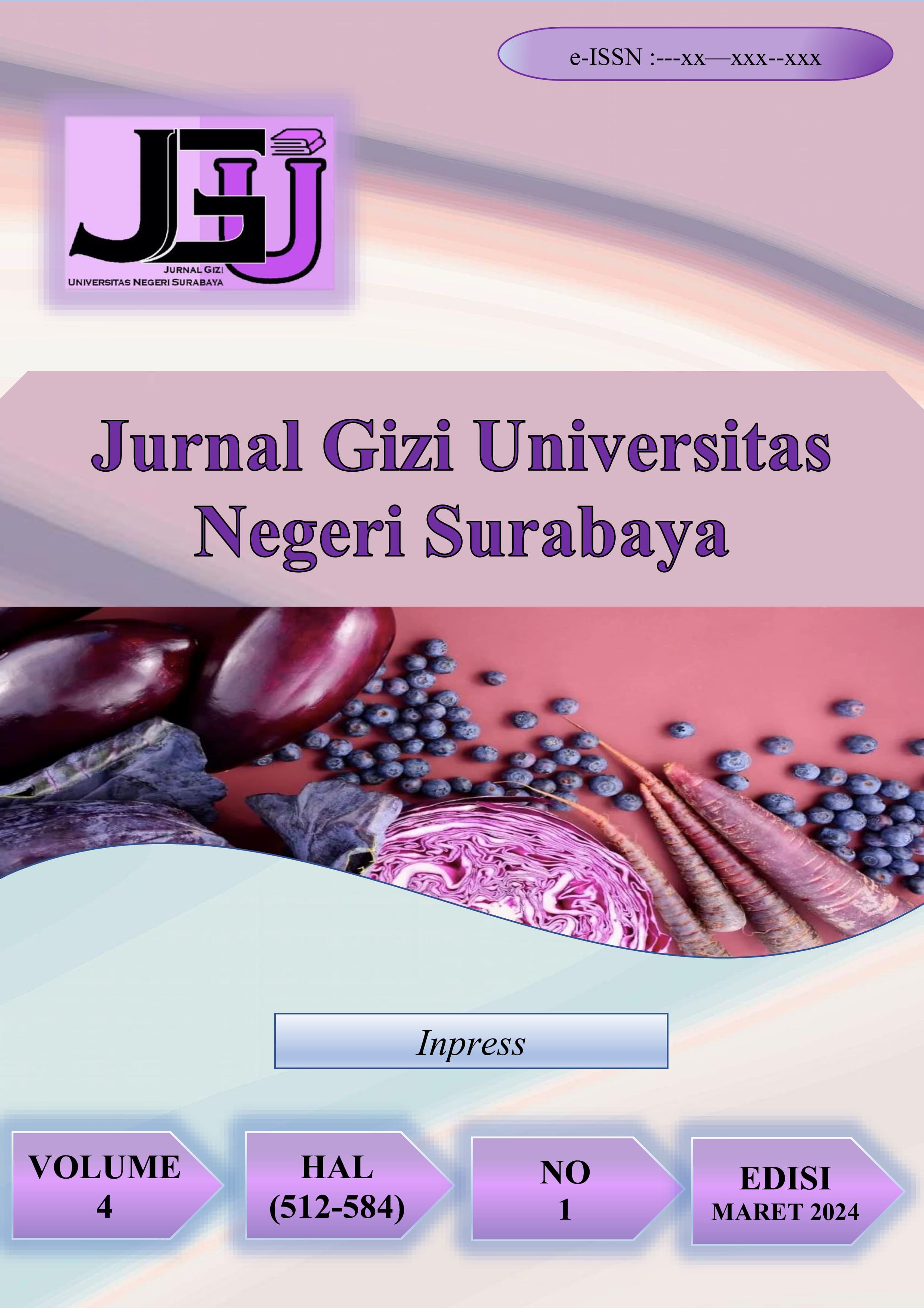DIFFERENCES IN KNOWLEDGE AND INTAKE OF TODDLER BETWEEN MOTHERS OF STUNTING AND NORMAL TODDLER AT PUSKESMAS KALIRUNGKUT SURABAYA
Keywords:
Keywords: Knowledge, Food Intake, Stunting, Mothers of ToddlersAbstract
Stunting was a condition of failure to thrive in toddlers due to chronic malnutrition which was caused during the first 1000 days of a toddler's life when they did not received food intake that met their nutritional needed. The direct factor causing stunting was food intake, while the indirect factor of stunting was knowledge of balanced nutrition among mothers of toddlers. This studied aims to determine the differences in mothers' knowledge of balanced nutrition and toddler food intake between stunting and normal toddlers in the kalirungkut community health center area, surabaya. This studied used a cross-sectional researched design with 46 mothers of toddlers as respondents, with details of 23 mothers of stunting toddlers and 23 mothers of normal toddlers. The mother's balanced nutritional knowledge variable was obtained used a multiple choice test sheet, while toddler food intake was obtained used the semi quantitative food frequency questionnaire (sq-ffq). The data analysis technique used was the independent sample t-test. The results of this studied provided a significance of 0.010 < 0.05, which shows that knowledge of balanced nutrition among stunting mothers was different from that of normal toddler mothers, stunting toddler mothers were lowered than normal toddler mothers. Meanwhile, the food intake of toddlers gave a significance of < 0.05, namely energy 0.011, protein 0.000, fat 0.026, and carbohydrates 0.001, which shows that the intake of stunting toddlers was different from normal toddlers. Stunted toddlers' food intake was lowered than normal toddlers. Keywords: Knowledge, Food Intake, Stunting, Mothers of ToddlersDownloads
Download data is not yet available.
Downloads
Published
2024-01-19
How to Cite
Satya Arrum, N. I. (2024) “DIFFERENCES IN KNOWLEDGE AND INTAKE OF TODDLER BETWEEN MOTHERS OF STUNTING AND NORMAL TODDLER AT PUSKESMAS KALIRUNGKUT SURABAYA”, Jurnal Gizi dan Kesehatan Nusantara, 4(1), pp. 532–537. Available at: https://ejournal.unesa.ac.id/index.php/GIZIUNESA/article/view/57817 (Accessed: 13 December 2025).
Issue
Section
Artikel
 Abstract views: 75
,
Abstract views: 75
, PDF Downloads: 96
PDF Downloads: 96


